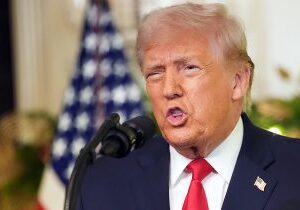In a surprising move, tech mogul and entrepreneur Elon Musk took to his X platform to reignite the conversation surrounding government inefficiencies by posting an unearthed video of former President Barack Obama. The video, originally from 2011, shows Obama unveiling a plan to reduce wasteful government spending—an initiative that sounds strikingly similar to Musk’s current push for the Department of Government Efficiency (DOGE). Musk’s tweet pointed out the similarities between the two efforts, with the caption: “Sounds exactly like DOGE.”
The timing of Musk’s post was significant, as it tapped into the ongoing debate about the efficiency of government programs and how to address the ballooning federal deficit. The video Musk shared showcased Obama speaking about the “Campaign to Cut Waste,” an initiative aimed at eliminating unnecessary government expenditures, including spending on projects that many considered frivolous. This effort, despite its good intentions, became part of a broader discourse about government accountability and the extent to which political promises to cut wasteful spending were effectively carried out.
In the video, Obama not only spoke of government inefficiencies but also joked about appointing then-Vice President Joe Biden to lead the campaign. The lighthearted comment, “Nobody messes with Joe,” seemed to emphasize the seriousness with which the Obama administration approached the task of reducing waste. However, while the video was humorous, the message was clear: government must be held accountable, and there should be no tolerance for wasteful spending, especially when American taxpayers are footing the bill.
Obama’s remarks highlighted the ongoing challenges that have plagued federal spending, pointing out, among other things, the ridiculousness of funding a website dedicated to a folk music group called “The Fiddlin’ Foresters” that was made up of forest rangers. Obama quipped, “I’ll put their music on my iPod, but I’m not paying for their website.” This was just one example of what the administration called “pointless waste.” In addition to such examples, Obama also highlighted other costly government projects, including thousands of vacant government buildings, that had been left untouched due to bureaucratic inertia and red tape.
The core of Obama’s message was the need for the government to act like American families—living within their means and cutting back on unnecessary expenses. This sentiment resonated with many Americans who were facing their own financial struggles during the time of the video, as the 2008 financial crisis was still fresh in the minds of many. Obama acknowledged that some cuts might not be large, but emphasized that every dollar mattered. In his words, “No amount of waste is acceptable. Not when it’s your money.”
For Musk, the parallels between this past initiative and his own push for a more efficient government were evident. Both plans focus on reducing waste and inefficiency in government, but while Obama’s initiative was part of a larger set of reforms, Musk’s DOGE plan aims to take a more hands-on approach to identifying and cutting waste from the system. This focus on eliminating government waste echoes a broader frustration with government bureaucracy, a frustration that both Obama and Musk seem to share.
However, despite Obama’s campaign to cut waste, some critics argue that it had limited success in actually reducing the bloated nature of the federal government. While the effort raised awareness about wasteful spending, the actual impact on federal spending was less pronounced than many had hoped. As Musk’s DOGE plan advances, questions linger about whether such initiatives can achieve their goals and whether they will lead to tangible improvements in how government agencies function.
Part 2: The Fallout and Criticism of Government Waste Reduction Plans
When Obama launched his Campaign to Cut Waste over a decade ago, it was heralded as a step toward making the federal government more accountable. However, as history has shown, the effort had mixed results. Despite lofty promises and a clear call for fiscal responsibility, the initiative largely failed to achieve the sweeping changes that many had hoped for. In part, this can be attributed to the inherent challenges of addressing government inefficiencies within the layers of bureaucracy and the political barriers that often prevent substantive reform.
The initial enthusiasm surrounding the “Campaign to Cut Waste” was palpable. Obama’s remarks in the video, highlighting examples of absurd waste—such as the funding of a website for a folk music group—spoke directly to public frustrations about government inefficiency. For many Americans, the idea of cutting wasteful spending in government sounded like a simple and straightforward solution to the country’s growing deficit. However, as the years passed, it became apparent that the problem was more complex than a few websites or underused buildings.
One of the major challenges in cutting government waste is the sheer scale of the federal government and the number of agencies involved. While Obama’s initiative aimed to target waste at the federal level, there are thousands of programs, offices, and departments across the U.S. government, each with its own budget, priorities, and internal bureaucracy. This fragmentation makes it incredibly difficult to streamline operations and eliminate inefficiencies without significant structural changes.
Moreover, the political resistance to cutting government programs is another obstacle that Obama faced. Many of the programs and initiatives targeted for cuts often have powerful lobbying groups and public support behind them. The difficulty of balancing political support with fiscal responsibility means that attempts to reduce government spending are often met with resistance from both political parties, as well as interest groups that benefit from the status quo.
Critics argue that while Obama’s campaign raised awareness about wasteful spending, it did not result in lasting change. Many of the identified inefficiencies were not eliminated, and some programs continued to receive funding despite their lack of impact. This has led some to question the efficacy of future efforts to reduce government waste, including Musk’s DOGE plan.
Musk’s DOGE plan, while focused on reducing government inefficiencies, faces similar challenges. Despite the promise of sweeping reforms, Musk’s initiative has already encountered resistance from political figures, government officials, and even citizens who view such changes as an infringement on essential services. The recent controversy surrounding the plan highlights the tension between government oversight and the need for fiscal responsibility. While Musk’s plan may be well-intentioned, the path to reform is fraught with obstacles, including the entrenched political interests that benefit from the current system.
Furthermore, critics argue that while reducing waste in government spending is important, it is not enough on its own to address the broader issues facing the U.S. economy. Some contend that a more comprehensive approach is needed—one that includes both cutting waste and investing in programs that will stimulate economic growth, create jobs, and address the country’s pressing social issues.
Part 3: The Future of Government Efficiency and the Role of Private Sector Influence
As we look to the future of government efficiency and the role of private sector influence, it’s clear that initiatives like Obama’s Campaign to Cut Waste and Musk’s DOGE plan are just the beginning of a much larger conversation about the relationship between government and business. Both initiatives reflect a growing frustration with inefficiencies in government and a desire for reform. However, these efforts are not without their critics, who argue that they may prioritize financial considerations over public welfare.
Musk’s DOGE plan, for example, aims to reduce government waste by implementing private sector principles of efficiency and competition. By bringing a business-minded approach to government operations, Musk hopes to streamline processes, cut costs, and make government agencies more responsive to the needs of citizens. This approach is attractive to many who believe that government is inherently inefficient and that the private sector can provide better solutions. However, this model also raises questions about the role of corporations in shaping public policy.
The involvement of private companies in government efficiency efforts could lead to potential conflicts of interest, as businesses seek to influence policy in ways that benefit their bottom line. For example, private contractors may stand to profit from government contracts or programs that Musk’s DOGE plan aims to streamline. Critics argue that this could lead to privatization efforts that prioritize corporate profits over the needs of the public, especially vulnerable populations who rely on government services.
On the other hand, some argue that private sector involvement is essential to driving innovation and improving efficiency. By applying the same principles that have made companies like Tesla and SpaceX successful to government programs, Musk believes that significant savings can be achieved, and that the government can operate more like a well-run business. This, in turn, would allow the government to direct more resources toward critical services and programs that directly benefit citizens.
However, the success of such an initiative hinges on how effectively the private sector can collaborate with the public sector. Public-private partnerships have proven successful in certain areas, such as infrastructure development, but they are not without their challenges. Government agencies and private companies must work together to balance efficiency with accountability, ensuring that the public interest remains a top priority.
As Musk’s DOGE plan moves forward, it will be crucial to monitor its impact on government spending, citizen services, and public trust. The future of government efficiency will depend on the ability to strike a balance between fiscal responsibility, effective public services, and the role of private sector influence. Whether Musk’s initiative can successfully navigate these complexities remains to be seen, but it will undoubtedly shape the conversation about government reform for years to come.
In conclusion, while both Obama’s Campaign to Cut Waste and Musk’s DOGE plan share similar goals, they represent two distinct approaches to government efficiency. Obama’s efforts, constrained by political realities and bureaucratic inertia, ultimately fell short of their promises. In contrast, Musk’s plan, though still in its early stages, aims to bring a business-driven mentality to government reform. The success of these initiatives will depend on how well they can address the inherent challenges of government inefficiency and navigate the complex political and economic forces at play.
WATCH:
Political Resistance and Challenges in Government Efficiency Reforms
Despite both Obama’s Campaign to Cut Waste and Musk’s DOGE plan sharing a commitment to reducing government inefficiencies, their success depends on overcoming significant political and institutional barriers. These obstacles are often compounded by the political nature of government reform, which can make swift action difficult. Political resistance and lobbying groups that benefit from current inefficiencies are some of the largest hurdles to successful implementation of any reform. The political landscape surrounding government efficiency is complicated and requires careful navigation to avoid unintended consequences.
For instance, while the idea of cutting waste is widely accepted in theory, politicians often face pushback from constituents who rely on government-funded services, as well as from interest groups that have a stake in the status quo. In Obama’s time, many of the waste-cutting proposals faced resistance from public service unions, which feared that the reduction of waste might result in job losses for workers in government-funded programs. Similarly, some programs identified as wasteful or inefficient have passionate supporters who argue that they provide essential services, making cuts politically contentious.
Obama’s “Campaign to Cut Waste” faced these challenges head-on. Although he pushed for eliminating unnecessary government programs, he also had to ensure that cuts did not negatively impact vital services. For example, while reducing spending on frivolous websites and consolidating redundant government buildings seemed like an easy win, cutting funds from areas such as education, healthcare, and public safety was not as straightforward. Many of these programs had vocal advocates, including unions, educators, and community groups, making it difficult to push through reforms without facing significant resistance.
Similarly, Musk’s DOGE initiative, though still in the early stages, is likely to face similar opposition. The private sector’s involvement in public policy reform can be a double-edged sword, with critics arguing that private companies are more interested in reducing government spending to increase their own profits rather than improving services for the public. If Musk’s reforms focus on reducing government waste by shifting responsibilities to private contractors, there is a concern that essential services may be sacrificed in the pursuit of efficiency. Moreover, Musk’s influence on government policy could be seen as a form of privatization that benefits corporations more than the citizens they are supposed to serve.
The focus on cost-cutting may lead to the erosion of programs that are crucial for vulnerable populations. While eliminating waste is essential, it is also important to ensure that the reforms do not disproportionately affect those who rely on government services for their survival. Programs such as Medicare, Social Security, and public housing are already underfunded in many areas, and cutting costs in these programs could have devastating effects on the individuals who depend on them. Musk’s emphasis on efficiency may not adequately address the need for fairness in how government services are distributed, which is a critical concern that needs to be balanced with cost-cutting measures.
Additionally, the political landscape in the United States has become increasingly polarized, with both major political parties reluctant to make significant reforms that could upset their constituencies. Efforts to reduce government inefficiency, such as Musk’s DOGE initiative, may be seen as too radical or even punitive by the opposition. Furthermore, lobbying groups, particularly those with deep pockets, can have a significant impact on the policy process, making it difficult for government reforms to make real, lasting changes.
The complexity of government programs also makes it hard to simply cut waste without affecting services. Many government functions are interconnected, and cutting waste in one area can inadvertently affect others. For example, cuts to defense spending could have ripple effects on veterans’ benefits or homeland security programs. Musk’s DOGE initiative would need to take these complexities into account and carefully consider the long-term impact of its proposed reforms on all aspects of government spending.
The Economic Implications and Effects on Public Services
Beyond the political challenges, the economic implications of large-scale government efficiency reforms are another critical consideration. Cutting wasteful spending sounds like an easy fix to balance budgets, but it often involves difficult decisions that can have wide-reaching economic consequences. Some of the waste targeted by these reforms may be small on an individual scale, but when aggregated, it can result in significant savings. However, those savings often come with trade-offs that could negatively affect public services.
While Obama’s Campaign to Cut Waste aimed to eliminate wasteful government spending, it failed to address the broader issue of how government funding is allocated. Many of the programs that were cut or reformed during Obama’s tenure were often targeted because they were seen as low-hanging fruit—areas where savings could be made without causing much political fallout. However, many critics argue that such reforms fail to address the structural issues within the government’s funding system. The government’s budget allocation process is often opaque, with large sums of money flowing to entrenched interests and bureaucratic inefficiencies that go unnoticed by the public.
Musk’s DOGE initiative faces the same issue: how to streamline government spending without sacrificing the quality of services or creating new inefficiencies. The assumption that the private sector can do a better job of running government programs may not always hold true, especially when the private sector is driven by profit motives. Public services, unlike private businesses, must prioritize access and fairness over profitability. As such, privatizing government functions without careful oversight can lead to a decline in service quality and accessibility.
Moreover, the cost of maintaining a bloated federal government is not just a financial issue; it is also an issue of economic equity. Musk’s approach to cutting waste could potentially lead to more uneven economic outcomes, with wealthier individuals or corporations benefiting from reforms while vulnerable populations bear the brunt of cuts. For example, reducing spending on programs that serve low-income communities might save money in the short term, but it could also lead to greater inequality and increased social unrest in the long run.
It is important to recognize that cutting waste does not necessarily translate into better services for citizens. In fact, aggressive cost-cutting measures can sometimes result in a reduction in the quality of services provided to the public. If Musk’s DOGE initiative focuses too heavily on reducing costs without considering the broader impact on service delivery, it could backfire and exacerbate existing inequalities.
The Future of Government Efficiency: Striking a Balance Between Cost-Cutting and Public Welfare
Looking ahead, the success of initiatives like Obama’s Campaign to Cut Waste and Musk’s DOGE plan will depend on how well they strike a balance between reducing waste and preserving essential public services. There is no doubt that government waste must be addressed, but it must be done in a way that does not harm the most vulnerable members of society.
Musk’s DOGE initiative has the potential to bring about real change in how government operates, but it also carries significant risks. The focus on efficiency must be balanced with an awareness of the broader social and economic implications of reform. Reducing government waste is a noble goal, but it must be done in a way that ensures fairness, equity, and access for all citizens.
The ultimate challenge will be finding a way to streamline government spending without compromising the quality of services that people rely on. Public services such as healthcare, education, and social welfare programs must remain a priority, even as efforts are made to reduce inefficiencies. It will be essential for any government reform initiative to ensure that cost-cutting measures do not disproportionately affect vulnerable populations or lead to the privatization of services that should remain publicly accessible.
The future of government efficiency will depend on the ability of leaders like Musk to navigate the complexities of government bureaucracy and the political landscape. Success will require more than just reducing waste; it will require a comprehensive approach that takes into account the needs of all citizens and ensures that government services are delivered effectively and equitably. Only time will tell whether Musk’s DOGE plan will succeed in achieving these goals, but the conversation about government reform is one that will continue to shape the future of public policy for years to come.
In conclusion, the issue of government efficiency is more complex than simply cutting waste. While both Obama’s Campaign to Cut Waste and Musk’s DOGE initiative aim to reduce inefficiencies, their success will depend on how well they can balance the need for fiscal responsibility with the need to provide essential services to citizens. Whether these efforts succeed or fail will have far-reaching implications for the future of government policy and the lives of everyday Americans.





